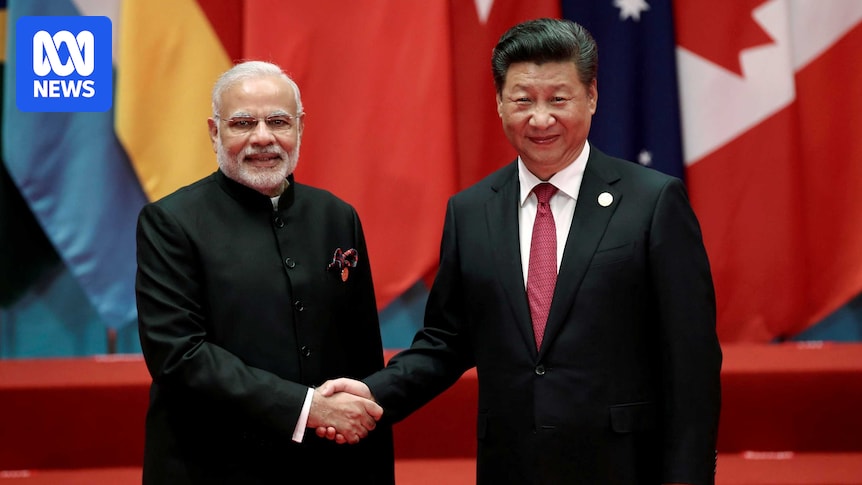
India and China are cautiously rebuilding their diplomatic and economic ties, with U.S. President Donald Trump’s aggressive tariff policies inadvertently nudging the two nuclear-armed neighbors closer on certain issues. Experts suggest that these developments could reshape regional dynamics as direct flights between India and China are set to resume for the first time in five years. Additionally, Indian Prime Minister Narendra Modi is scheduled to meet Chinese President Xi Jinping later this month on Chinese soil, marking their first meeting there since 2018.
The announcements followed a meeting between Chinese Foreign Minister Wang Yi and Mr. Modi, along with senior Indian defense officials, in New Delhi. This diplomatic engagement signals a potential thaw in relations that have been strained since a deadly border clash in 2020, which resulted in the deaths of at least 20 Indian troops and an undisclosed number of Chinese soldiers in the disputed Ladakh region.
Renewed Diplomatic and Economic Engagement
Chinese state media reported that both nations have agreed to “explore the possibility of advancing boundary demarcation negotiations” and have committed to reopening three border trade markets. Furthermore, the two countries plan to issue tourist visas again and enhance trade ties, with another meeting scheduled for 2026.
Prime Minister Modi expressed optimism about the renewed engagement, stating on social media, “Stable, predictable, constructive ties between India and China will contribute significantly to regional as well as global peace and prosperity.” Modi’s upcoming visit to China for the Shanghai Cooperation Organisation summit will be his first in over seven years, where he will join Xi Jinping and Russian President Vladimir Putin.
The Trump Effect on India-China Relations
The warming relations between India and China come in the wake of President Trump’s threats of imposing 50% tariffs on India for importing Russian oil, alongside ongoing negotiations with Beijing over tariffs on a wide array of goods. Professor Steve Tsang, Director of the SOAS University of London’s China Institute, noted that the recent agreements are the culmination of a long-term process, rather than a direct result of U.S. policy.
“There is incentive on the part of both the Indian leader and the Chinese leader to try to work together, in whichever ways they can, since it will strengthen their hands when dealing with the Trump administration,” Professor Tsang explained.
India had anticipated benefiting from Trump’s reciprocal tariff regime by attracting additional investment that previously flowed through China. However, the imposition of hefty tariffs forced India to reconsider its strategic partnerships.
Implications for U.S.-India Relations
The evolving India-China relationship has implications for U.S.-India ties, which have been under strain despite India being a close ally of the U.S. early in Trump’s presidency. Chietigj Bajpaee, Senior Research Fellow for South Asia at Chatham House, highlighted several factors contributing to the strained relationship, including India’s resistance to a new trade deal and the high tariffs imposed on Indian goods.
“India is not the only major buyer — the Chinese are as well, Türkiye is as well, but I suppose from the Trump administration’s perspective, it is easier to target India,” Dr. Bajpaee remarked.
This deteriorating relationship raises questions about the future of the Quad alliance, which includes India, Australia, Japan, and the U.S., aimed at countering China’s regional influence. The potential impact on the alliance remains uncertain as India navigates its diplomatic engagements.
Challenges and Future Prospects
While the resumption of flights and renewed economic discussions are significant, experts caution against interpreting these developments as a major strategic shift. India recently tested a domestically produced Agni 5 medium-range ballistic missile, capable of reaching deep into Chinese territory, underscoring ongoing security concerns.
“None of the fundamental grievances in the bilateral agreements [on the border] have been resolved … we’ve not seen a demilitarisation of the border,” Dr. Bajpaee stated.
Additional challenges include China’s close ties with Pakistan, water disputes, and the Tibet issue, which could complicate future relations. The Dalai Lama’s recent milestone birthday and questions surrounding his succession add another layer of complexity to the bilateral relationship.
As India and China cautiously navigate their diplomatic path forward, the global community will be watching closely to see how these developments influence regional stability and the broader geopolitical landscape.







